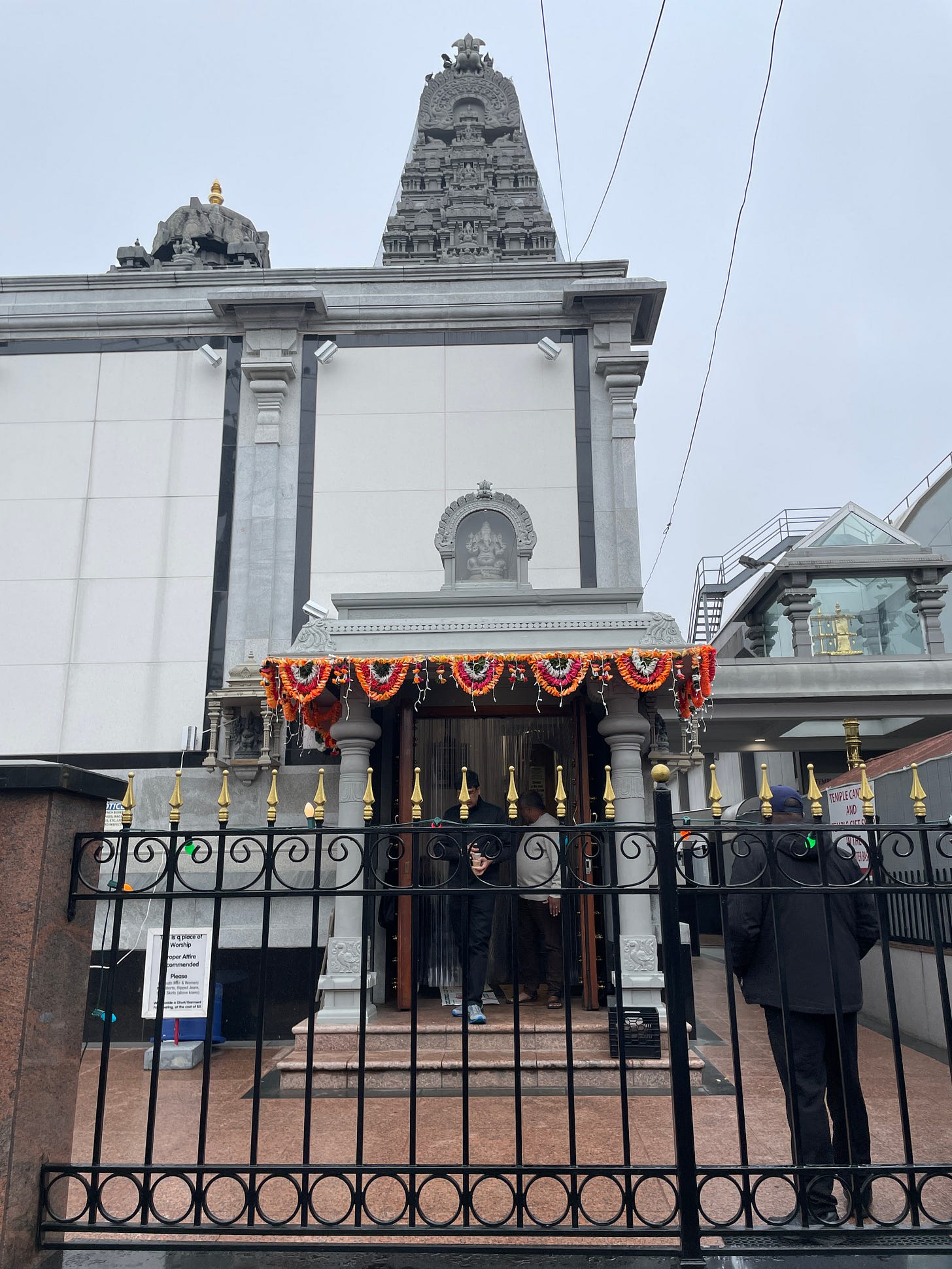Queens: The Hindu Temple Society of North America
The first Hindu temple in North America may be carrying the torch when it comes to religious freedom in the United States
A few blocks away from a major thoroughfare in Flushing, Queens - as well as several historic sites - is a residential section of the noted Queens neighborhood. Blocks of houses and rows of stores dot this area. But as noticeable as these houses and stores are, so is the rising structure of a Hindu temple and its traditionally carved designs in South Indian style.
This is the Hindu Temple Society of North America, also known as The Ganesh Temple and even Šri Mahã Vallabha Ganapati Devasthãnam. The temple and its structure may appear to be out of place in this part of Flushing, but with its history and significance not only in the neighborhood or Queens or New York City but also in the United States, Flushing may be the best place for The Ganesh Temple.
After all, this is where those who brought The Hindu Society of North America together in 1970 and thus created a religious and community center for Flushing’s Hindu residents and the first and oldest Hindu Temple in North America.
“In the 1960s, a lot of women who were doctors from India and people working for the U.N. were coming here,” says M.R. Ravi Vaidyanaat Šivãchãriar, the Temple’s Director of Religious Affairs. “Queens was like a gateway to America for them. You had all these ethnicities in Flushing.”
Soon, these Indian immigrants began to feel that they needed a temple and they began to gather in each other’s houses. In January 1970, they legally purchased a piece of land that used to belong to a Russian Orthodox church, Holy Annunciation which moved to another part of Flushing. The land was also off Bowne Street, a broad avenue named after John Bowne, a Queens resident from England 300 years earlier who is credited with laying the foundations for Freedom of Religion in the colonies which then found its way into the U.S. Constitution.
The old church was demolished, followed by 40 artisans from India and 30 workers from New York’s labor union started building the temple in the early 1970s and completing in 1977. The Temple is dedicated to Ganesh, the Hindu god who is the remover of obstacles and is regarded for his wisdom and intelligence. The exteriors are dotted with many gods and goddesses carved into granite straight from India. Anyone entering the temple must remove their shoes, especially before entering the prayer hall though it is alright to leave socks on. There is a dress code in which mini or short skirts above the knee or ripped jeans. are not permitted. If needed a wrap-around cloth for men & women can be provided at a cost of $5 each.
Photography and videography are not allowed inside the prayer hall, where nearly a dozen altars with small statues of the Hindu deities are spread out inside the hall. Candles are lit, garlands are draped over these statues, and naivedyam, or food offerings, can be seen before the deities.
The Temple has been around for 54 years and it continues to grow as more practicing Hindus join its community.
“Everyday, we get 300 to 500 walk-ins,” says Šivãchãriar. “On Saturdays and Sundays, 1,300 to 1,500. We’ve been growing and we expect more, such as 7,000 during festivals and over 2,000 during weekends.”
The Temple also serves the community not just when it comes to Hinduism, but also with food donations and tutoring services for students.
“We can’t expand the building but we will expand our services more,” says Šivãchãriar.
One thing The Hindu Society of North America is known for is its canteen. What started as a place to prepare food offerings to the deities has now grown into a place that also feeds the community. Dining, take-outs, and snack orders all over the country take place at the Temple’s canteen and it is gaining attention as an eatery in the local news.
All are welcome to the canteen, much like it is mentioned with the temple’s logo. It shows the symbols of the five major religions: Judaism, Christianity, Islam, Buddhism, and Hinduism, all around in a circle. On top is the AUM or OM symbol, an invocation sound in Hinduism. According to the Temple’s website, this logo means “it signifies universality, catholicity and spirit of tolerance of Hinduism.” Šivãchãriar explains the temple recognizes every faith.
Being off a street dedicated to the man credited for starting religious freedom in America and being mere blocks away from many of Flushing’s historical sites, including those that led to democracy and religious freedom, The Ganesh Temple seems to be in the best location to continue with the story of Hinduism in America that began 54 years ago. And with more practicing Hindus joining the Temple, the torch is likely being passed to the Hindu Society of North America.







